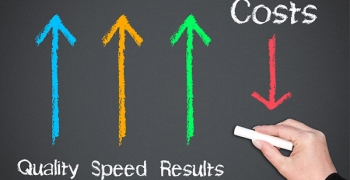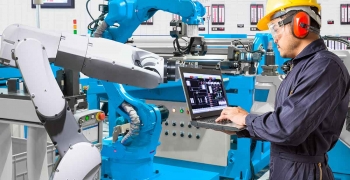“What’s the best way to retire a product gracefully, timely, and efficiently?” someone asked me recently. This is a significant question a lot of businesses across the world often face. In fact, I think, it is quite an enigma. However, enigmas have no room in boardrooms.
Irrespective of domains and verticals, products age and perish. While in some industries, the lifecycle is prolonged, in some others, it is shorter. For example, most aerospace products are developed to endure at least 30 years, but that cannot be said for the telecom industry where products and services face obsolescence in no time. While a product’s lifetime can’t be adjudicated on the basis of a singular yardstick, the basic norms of managing a product till the end stay the same.
When conceptualizing a product, the various stages of its lifecycle are projected and measures taken accordingly. And while the launch and the removal are the terminal points in the cycle, it is the middle-of-life phase of the product and its management that prove critical. If we talk of the high-tech industry, we seldom see a formula fall flat on its face. That is because a lot of thought and simulation goes into conceiving the ideas and executing them. Yet, it is this industry that is most prone, in my opinion, to indecisions regarding ‘sunsetting’ a product. When a product hits a plateau, upgrades are put to use in order to inject a fresh lease of life to it. Now, we are talking about user bases of millions, and hence, even a small upgrade or addition of a feature lends months, if not years, to the lifecycle of the product. But overreliance on prolonging the lifecycle of a product is, more often than not, a double-edged knife. While upgrades could be a safe bet in the short run, it takes away from the time and resources that could be otherwise devoted to developing something new, something more sustainable. This brings us firmly back to the question we started with.
When a product is showing signs of stagnation, it’s crucial to chalk out a watertight strategy to transition it gradually and not abruptly. For example, when a consumer buys a TV or cellular phone, he deems to make at least a medium-term investment. But, in today’s world, technological innovations are outpacing user preferences. So, here is where middle-of-life support (MOLS) plays the crucial role of balancing consumer investments and industrial decision-making. While upgrades work as small doses of perpetual innovation, the real deal lies in identifying and retaining the path-changing innovation for the launch of a new product. To make a tongue-in-cheek comparison, improvisation in form of upgrades in a middle-of-life product is a smart move, while a new product packaged with the choicest innovations is sexy. It is this smart vs. sexy debate that makes MOLS so critical to product lifecycle management (PLM).
In my opinion, providing MOLS isn’t a particularly rewarding job. If innovations form your skill set and endeavor, then you rather focus on prototyping a power-packed product instead of harnessing that innovation for MOLS. It’s no wonder that the world is crying out for more MOLS providers. Digitizing PLM, automation services, and analytics are just some of the MOLS solutions that should add value to the spectrum.
The growth rate of the PLM industry is expected to remain sluggish till at least 2024 and, as a result, MOLS providers will be far less in number than is required immediately. It implies that we are looking at a market clutter with customers either spoilt for plenty or acutely short of choices. This can only be averted by efficient MOLS modules and sunset planning. In order to avoid remaining stuck in a limbo, it is crucial that we have a thorough understanding of a product’s lifecycle, its utility, and its capability of staying relevant over time.
Data collection plays an important role in paving the path to sunsetting a product and is a vital facet of MOLS. Depending on where the product stands in a rampantly diversifying market space, the best decision is made for a smooth transition to end of life. Customers who have come to be dependent on these products have to be given a due thought too. Abruptness in sunsetting a product could be disastrous, but taking too long to do so is also counterproductive. The most feasible way to start the process is by creating a communication model and informing all touchpoints to get ready for the removal. Also, a thorough understanding of the margins is very important to sustain the revenue inflow and not bring about steep fall.
With the current scenario of the PLM industry, MOLS also offers bandwidth to create a strong and sustainable enterprise. It has the merit to not just fill the void and plug the holes, but act as a steady revenue source. Also, it is crucial to identify a sunset product early and give it the due run with a plan in place for the next decade. In this quest, it is also crucial that MOLS partnerships are forged and tailor-made expertise brought on board.
A smooth transition holds the key to the marketability of the new product in the pipeline. Poor planning and an inadequate sunsetting procedure would not just compromise the brand’s image, but will run the risk of internally hemorrhaging an organization. After all, efficient management doesn’t come easy and has barely any alternative.




